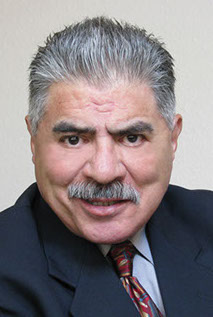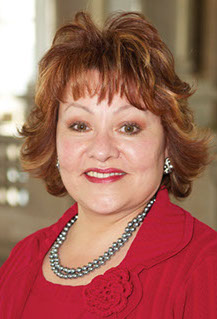

A major distinction between English and Spanish colonialism in the Western Hemisphere was the level of interaction between the colonialists and indigenous natives. The English enacted anti-miscegenation laws in the Maryland colony as early as 1661, while the Spanish appeared to place emphasis on survival and sustainability of their forces rather than racial purity.
The first major opposition Spaniards encountered in the New World was from the Aztecs, whose demise was attributable to several factors, the first being the practice of human sacrifice. Many of the their sacrificial victims were from neighboring and subjugated tribes, which resulted in motivated allies for the Spanish invaders to recruit in their efforts to defeat the ruling Azteca.
attributable to several factors, the first being the practice of human sacrifice. Many of the their sacrificial victims were from neighboring and subjugated tribes, which resulted in motivated allies for the Spanish invaders to recruit in their efforts to defeat the ruling Azteca.
Perhaps the most influential factor in Spain’s conquest was the importation of communicable diseases. In addition to military arms, the Spanish brought “weapons of mass destruction” in the form of smallpox, measles, scarlet fever, typhoid, typhus, influenza, whooping cough, tuberculosis, cholera, diphtheria, chicken pox, and venereal disease, which eradicated a substantial number of the native population, estimated at 30 million in 1518. Nobody knows for sure how many Aztecs died from European diseases, but survivors and historians referred to the devastation as the “Great Dying.” Efforts by indigenous tribes to defend their ways of life and customs against Spanish diseases, armies and miscegenation proved to be futile.
Surviving indigenous natives adopted some form of language, political system and religious practices from the Spanish. Vestiges of their religious conversion are evident in many of today’s mestizo social and cultural practices. Perhaps the most obvious signs of cross-cultural influence were the birth names given Spanish, indigenous and mestizo children. For generations, newborns were given nombres de pila (baptismal font names) in honor of the Catholic Church’s Holy Family, or the saints’ day on which children were born.
In turn, the indigenous people imbued Catholicism with some of their cultural practices; including the adaptation of religious icons similar to the Catholic Church’s Virgin Mary. The dark-skinned Virgen de Guadalupe became Mexico’s patron saint and a revered religious and cultural icon.
The Spanish missionaries allowed natives and mestizos to worship their indigenous versions of the Holy Mother to hasten their conversion to Christianity, not realizing they would become the dominant religious icons of a hybrid people and culture. The blending of religion and culture is another example of selecting the best of both worlds as tools for survival. Christianity may have prevailed, but it was indelibly marked with a façade of the New World’s indigenous people.
In many areas of the New World, criollo, indigenous and mestizo groups were forced to pay tribute to Spain’s king and comply with its laws and customs. Anti-colonialism sentiments grew first among the sons and daughters born in the Americas of native Spaniards who suffered social, economic and political discrimination at the hands of their European-born peers: the peninsulares.
Indigenous tribes in more remote areas of the continent chose to remain physically, ethnically and culturally isolated from the invading gachupines (Náhuatl for cactzopin: with “spikes” or “spurs.” ) The term became a pejorative one used by criollos, mestizos and indigenous natives to refer to the Spanish ruling class and their sycophants.
It was the educated and disenchanted who fomented the independence movement that led to Mexico’s revolt against Spain. In 1810, a criollo priest Miguel Hidalgo y Costilla called for Mexico’s revolution, inciting his followers with a cry of: “¡Muerte a los gachupines! ¡Viva Nuestra Señora de Guadalupe! ¡Viva Méjico! (Death to the Spaniards! Long live Our Lady of Guadalupe! Long live Mexico!). After a long and bloody struggle, independence was won in 1821—11 years after his call to arms. Hidalgo y Costilla is still revered as the father of Mexico’s revolution from Spain.
Despite Mexico’s independence, Spain left indelible marks on Latin America. The fair-skinned European “look” remains preferable to darker skin tones associated with indigenous natives and mestizos. It is still common to hear Latinos gush with pride over the arrival of a güerito (pale-skinned newborn), while the arrival of swarthier infants is often met with sympathetic remarks.
Pale skin is still equated with privilege, power and wealth. This has led to large numbers of indigenous natives and mestizos being conflicted about placing a higher value on their Spanish ancestry, especially when in their own families members may range from morenos (dark skinned), to trigueños (olive skinned), to güeros (fair skinned). Color differences among Latinos are generally viewed as just another of many distinctive characteristics among siblings; no more important than being diestro o zurdo (right- or left-handed), alto o chaparro (tall or short), and delgado o gordo (thin or fat).
As U.S. Latinos have become more aware of the concept of equal opportunity in an increasingly multicultural society, they are also becoming more comfortable with their indigenous appearance and culture. But their exploding numbers and projected growth rates make it impossible to ignore their presence and contributions as the nation’s largest and fastest-growing ethnic consumers, employees, students, taxpayers and voters.
Jim Estrada is a veteran communicator based in Ausitn, TX. This is an excerpt from The ABCs and Ñ of America’s Cultural Evolution.

The National Latino Children’s Institute (NLCI), whose mission is to focus the nation’s attention on the contributions and unique challenges of young Latinos, has launched a multi-media campaign to prevent injuries and fatalities among young Latinos due to unrestrained drivers and passengers.
Although automobile accidents are the leading cause of death in the U.S. among Latinos between the ages of 5 and 34, there are few programs designed to educate and inform them of the importance of seatbelt use. The campaign, “Do it for your family, buckle up” (Hagalo por su familia, ¡abróchese el cinturón!), helps fill this void and and has the potential of saving thousands of lives annually and preventing countless more injuries.
 According to the U.S. Department of Transportation, car accidents kill 260,000 children a year and injure about 10 milion. They are the leading cause of death among children between 10 and 19 and a leading cause of child disabilities. Of unrestained children who die or are injured, the majority are Hispanic and African American chldren. Teens have higher fatality and injury rates than any other age group. They are also less likely to be buckled than any other group.
According to the U.S. Department of Transportation, car accidents kill 260,000 children a year and injure about 10 milion. They are the leading cause of death among children between 10 and 19 and a leading cause of child disabilities. Of unrestained children who die or are injured, the majority are Hispanic and African American chldren. Teens have higher fatality and injury rates than any other age group. They are also less likely to be buckled than any other group.
Language barriers, immigration status, long-held cultural customs and traditions, and other factors among Latinos, especially those who have recently immigrated, pose considerable challenges in reaching them. However, primary research conducted by NLCI for this campaign made it clear that the key cultural insight for motivating Latinos to wear their seatbelts was doing so for the sake of their families.
To prevent injuries and fatalities among Latinos resulting from unrestrained drivers and passengers, NLCI collaborated with the National Highway Traffic and Safety Administration (NHTSA) to develop this new, culturally relevant campaign to reach Latinos. Also working with locally based Latino organizations across the country, NLCI developed a bilingual, bicultural web-based campaign toolkit that is customized for the diverse Latino community. NLCI is making the campaign toolkit available to partner organizations around the nation for use in their local communities. The toolkit and its seatbelt use messages incorporate traditions and values that we know engage the Latino community. The campaign serves to motivate drivers and passengers to use seatbelts by focusing on the terrible consequences car accidents can have to the family if drivers and passengers are not properly restrained and protected
NLCI hopes to build and connect a nationwide network of informed leaders and organizations that serve and support young Latinos. Seatbelt use is the single most effective and immediate way we can save lives and reduce injuries among young Latinos. This is a winnable battle! Working with our partners, we believe that the use of culturally targeted media, especially digital and social media is key to connecting with the Latino community and changing behaviors and outcomes.
A recent Pew Research Report indicates that Latinos top everyone in social media activity. According to the survey, 80 percent of Hispanic adults in the U.S. use social media, that’s more than Whites (70 percent) and African Americans (75 percent). It is evident, that if we are to engage Latinos, we must reach them through the use of social media. NLCI’s campaign toolkit provides partner organizations with the tools they need to do so effectively.
The toolkit can be downloaded free of charge from the NLCI and NHTSA websites at www.nlci.org and www.nhtsa.gov. Latino-serving organizations, law enforcement and public safety officials, and the general public are urged to join us to help save lives by using and promoting the NLCI campaign toolkit.
The National Latino Children’s Institute is a national 501 (c) 3 non-profit organization whose mission is to focus the nation’s attention on the contributions and unique challenges faced by young Latinos. It carries out its mission by working with its network of 400 Latino children’s serving organizations, other national Latino and children’s organizations, through advocacy and social media.
By Rita Jaramillo